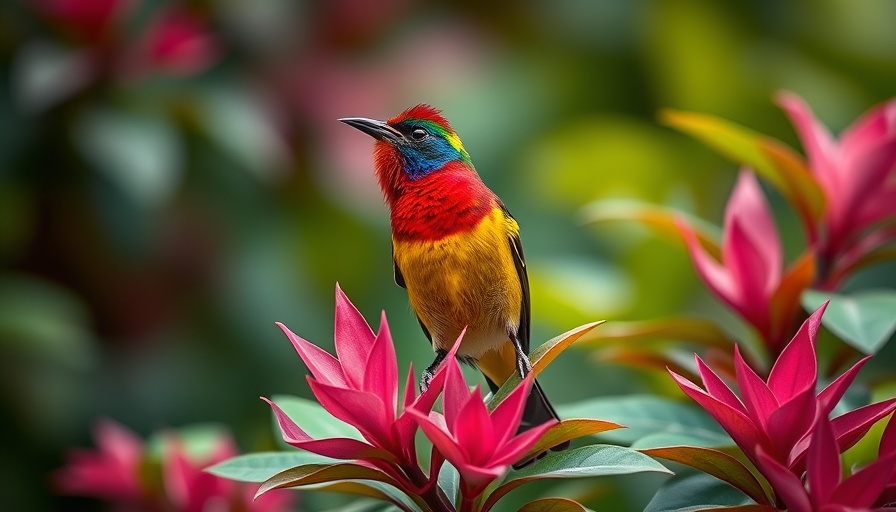
A Vibrant Connection Between Nature and Urban Life
In the heart of Cape Town, the sunbirds flit like living jewels, offering a spectacle that merges the vibrancy of nature with the bustling life of the city. These tiny creatures, akin to North America’s hummingbirds, create a dazzling presence with their iridescent feathers and charming behaviors. Their role extends beyond mere aesthetic enjoyment; they embody a unique connection between urban living and the natural world. This article explores the delightful charm of sunbirds and how they provide an accessible form of 'safari' right within the city limits of Cape Town.
Understanding the Sunbird Phenomenon
Sunbirds are nature's pollinators, sipping nectar not only for sustenance but also aiding in the reproduction of local flora. They are often seen buzzing around popular feeding spots, particularly in gardens or botanical parks like Kirstenbosch. Here, the orange-breasted sunbird thrives, demonstrating why these areas are must-visits for birdwatchers and photographers alike. This phenomenon fosters a deeper appreciation for the biodiversity that exists within urban spaces.
Exploring Cape Town's Rich Botany
The beauty of sunbirds is intricately tied to the indigenous flora of the region. Plants like Erica, Protea, and Agapanthus are perfectly adapted to attract these birds, with their tubular flowers specifically designed for sunbird feeding. This relationship is critical in maintaining ecological balance and showcases how local biodiversity contributes significantly to the aesthetic and functional aspects of urban gardens.
Best Times for Sunbird Spotting
To witness sunbirds in their vibrant plumage, visiting during the breeding season is key. Autumn through spring — particularly April, May, August, and September — is when these birds are in full display, courting and competing, significantly enhancing the viewing experience. For those looking to combine travel with a sense of adventure, planning a trip during these months can ensure the brightest encounters with these magnificent creatures.
Tips for Attracting Sunbirds to Your Garden
Creating a sunbird-friendly environment isn’t just for the parks; homeowners in Cape Town can attract these beautiful birds with some simple adjustments. Planting a diverse array of indigenous flowers rich in nectar and installing sugar water feeders can entice sunbirds into residential areas. Creating such habitats not only supports bird populations but enhances the local ecosystem, making urban living richer and more rewarding.
Cultural Significance of Birds in South Africa
In South African culture, the relationship between humans and birds transcends mere observation. Birds have imbued local lore, symbolism, and art. Sunbirds, in particular, are often associated with the vibrancy of life, representing the joys of the natural world. By fostering this connection, we are reminded of the importance of preserving natural habitats, not just for the birds but for future generations.
Conclusion: Getting Closer to Nature
By engaging in sunbird safaris or simply enhancing your home gardens, you can deepen your connection to nature. Cape Town’s sunbirds serve as reminders that the beauty of wildlife isn't confined to remote parks but exists in our backyards, waiting to be discovered. Whether you're an avid bird watcher or a casual adventurer, the experience of witnessing these feathered gems should inspire a greater appreciation for our shared environment.
If you’re ready to transform your garden into a sunbird sanctuary and explore Cape Town’s avian treasures, now is the perfect time to start planning your plants and tactics for an inviting, eco-friendly space.
 Add Row
Add Row  Add
Add 




Write A Comment